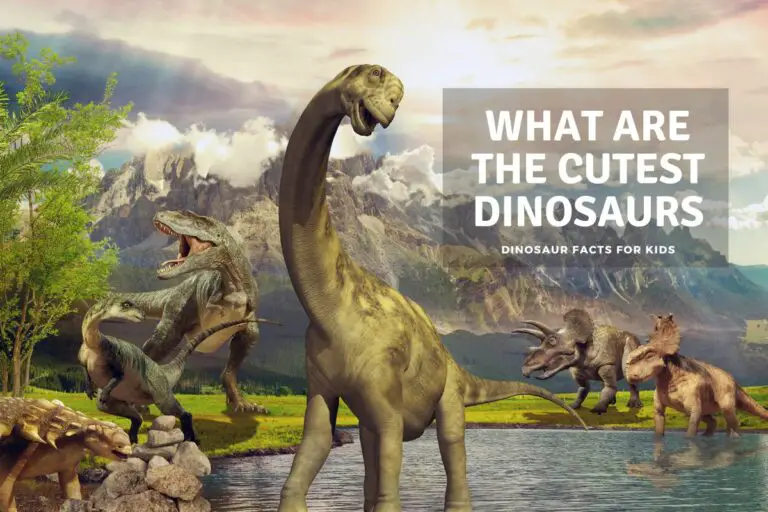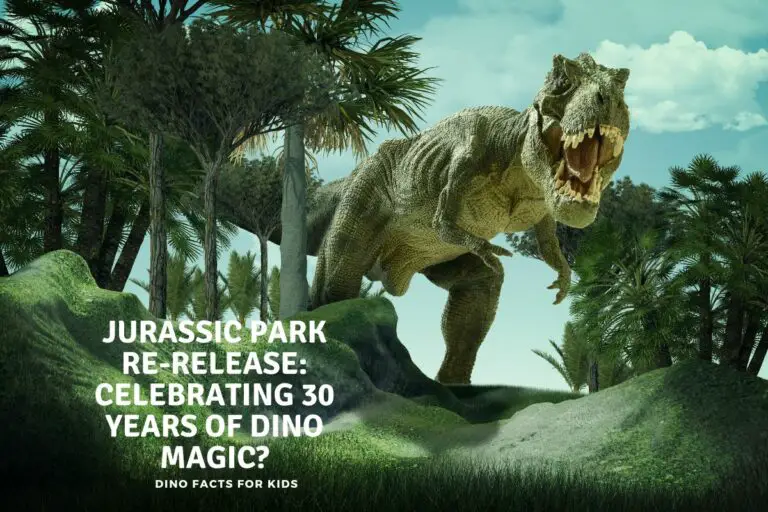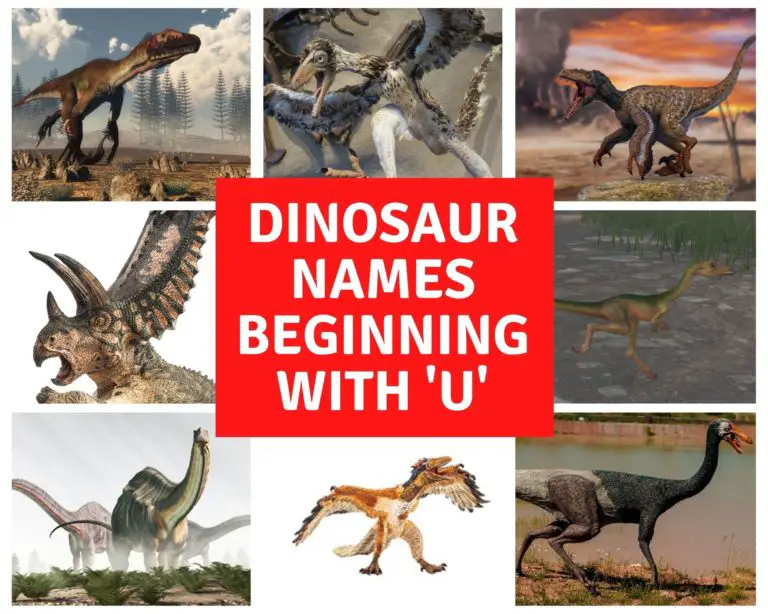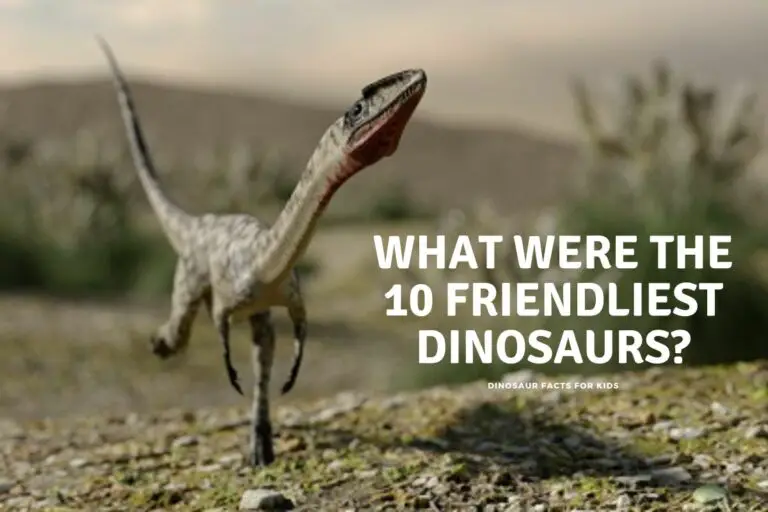Are Alligators Dinosaurs?
It has become quite a common belief among people that there are in fact dinosaurs still around today, even when we accept that the dinosaurs as a dominant land-dwelling animal kingdom was made extinct roughly 65 million years ago. What are we talking about? Of course, we speak of those well-known swamp-dwelling “dinosaurs” called alligators.
Despite similar appearances to some species of dinosaur Alligators are not dinosaurs, and only shared common ancestors, the archosaurs, with dinosaurs 230 -250 million years ago. The main differences include cold blooded, aquatic lifestyles, with legs to the side rather than underneath their bodies
Are alligators really dinosaurs, though? Or is it just a poorly placed myth? In this article, we’re going to try and get to the truth of this matter. If alligators are dinosaurs, what kind? If they’re not, why do so many people think they are?

Alligators are Dinosaurs – Yes or No?
Alas, the answer is no. Alligators are not dinosaurs, technically speaking. However, the belief that they are is not totally unfounded. There is a good reason that helps to explain why so many people have come to believe that alligators are, in fact, dinosaurs. The fact is that alligators belong to a larger family of creatures known as “archosaurs” and this broader group includes dinosaurs, as well as birds.
We can therefore say that while alligators are part of the same order that dinosaurs were part of, namely archosaurs, they are not technically dinosaurs. Alligators are descended from other reptiles that lived millions of years ago but were not part of the dinosaur family.
One of the distinctive features, for example, is the way they maintain a sprawled stance, and walk with their belly close to the ground or even touching it, with their tail dragging behind.
This stance and walk is different from many dinosaurs, who walked on either 2 or 4 legs depending on the species, and were either upright or balanced more horizontally like many theropod dinosaurs. Besides the gait and walk, of course, there are many other differences, too.
What do Dinosaurs Have in Common with Alligators? What is Different?
The main reason that so many people accept the notion that alligators are dinosaurs is the fact that they share so many apparent things in common. The most obvious similarity is in their seeming hard, scaly and/or armored skin, their powerful jaws and seemingly endless array of sharp teeth.
Alligators also share other anatomical similarities, such as having 4 legs and a long, powerful tail used both for balance and for self-defense.
On the other hand, while the teeth might appear to be sharp, they are actually not. Alligator’s have evolved teeth to assist in holding on tight to their prey, which allows them to pull prey under the water to drown them before they consume it, or to simply prevent the prey from escaping if they’re on land.
Dinosaur teeth such as those seen in the T-rex may appear to share some similarity in shape (when looking from a distance) but closer inspection would show a T-rex to have sharper, pick-ax-like teeth with finer points. T-rex teeth were made for ripping flesh from the bones of other creatures. Alligator teeth are not primarily evolved for this purpose.
Another key difference is found in their aquatic nature. While we may talk about “aquatic dinosaurs” that lived in the prehistoric lakes and oceans, these creatures are also technically not dinosaurs.
By definition, true “dinosaurs” were all land-dwelling. There are some exceptions such as Spinosaurus, which spent a lot of time in the water hunting, but was a dinosaur. Alligators are semi-aquatic creatures and are thus not considered dinosaurs in that sense.
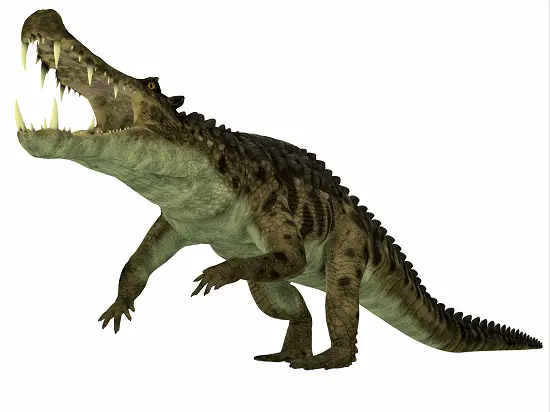
What Makes a Dinosaur a Dinosaur.
So while we know that alligators despite being on Earth in some shape or form for 230 to 250 million years are not dinosaurs, let’s take a look at the reasons below.
We have put this information into a table to more clearly explain the differences between alligators and dinosaurs. Now this is purely based on the classification of dinosaurs, which has been set for a over a hundred years, and although may need updating at same point, is what we have to decide what makes a dinosaur, a dinosaur at the moment.
Even with this classification there are debates and disputes and ones we have not included in the table include the following. Ones we have included also include more “pop culture” classifications like extinct ( there are plenty of extinct animals!)
- Spaces in skull between eyes and nostrils
- holes behind the eyes
- Ankle bending
- Hips with a hole
- Three or more sacral vertebrae
Dinosaurs are a class on its own of animals, these classes also include mammals, fish, amphibians, birds and, where we find the alligator, reptiles.
| Dinosaur Classification Criteria | Dinosaur | Alligator |
| Lay Eggs | All Dinosaurs are currently thought to have been egg laying. | Alligators and crocodiles both lay eggs. |
| Unable to Fly | Dinosaurs were unable to fly. So pterosaurs were flying reptiles – not dinosaurs | Thankfully prehistoric and modern alligators are also unable to fly! |
| Have two or four legs | Dinosaurs have two or four legs | Alligators have four legs |
| Have their legs under their body | Dinosaurs do have their legs under their body, be they bird or lizard hipped. | Being reptiles Alligators, and crocodiles have legs to the side of their body. |
| Not Aquatic | Although there is increasing evidence some dinosaurs did in fact live in water, the vast majority did not. | Alligators, and crocodiles do mostly ( see quinkana) live in water. |
| Not covered in Fur | Not covered in fur, though again more recent studies are finding feathers more frequently | No such thing as a hairy alligator. |
| Have tails | All known dinosaurs had tails | All known alligators have tails |
| Extinct | All known dinosaurs are extinct, or have evolved into something else (birds) | Alligators are still alive today. |
| Small or no ears | No evidence of ears on dinosaurs, at least ones that stick out. | Alligators can hear but do not have protruding ears. they are actually behind their eyes. |
We have bolded the three main differences between dinosaurs and alligators in the table above, and of those the most important is the difference between the structure of their legs. For a dinosaur to be truly classified as a dinosaur its legs will be under their bodies. Alligators legs are not, and it is not a dinosaur for this very important reason.
Where Did Alligators Come From?
The history of alligators as a species goes all the way back to the Triassic Period, roughly 250 million years ago. This, in fact, is yet another reason that people often think of alligators as dinosaurs, since they appear to stem from the same period of our prehistoric past.
Alligators were part of the Crocodilian group — aka Crocodyliformes — which also includes crocodiles (unsurprisingly), gavials, caimans and others.
The more familiar forms of these creatures first appeared about 100 million years ago in the Cretaceous period, around the end of the overall Mesozoic Era, or the “Age of the Reptiles.” So, the ancestors of both alligators and dinosaurs can certainly be understood as cousins within a larger family grouping, but it is not accurate to say that alligators are dinosaurs.
We also have an article discussing if crocodiles are related to dinosaurs here on the site for further reading.
Teleocrater
The discovery of one particular dinosaur ancestor was a catalyst for changing thinking regarding the relationship between alligators and other Crocodilians and the dinosaurs. An article published in Nature magazine highlighted one early relative of the dinosaurs called Teleocrater rhadinus. This was a large lizard-like carnivore, about 6 feet in length, that actually had a number of Crocodilian features.
For example, the Teleocrater walked on 4 legs, with its hip about 2 feet from the ground. It had a long tail and neck, and to see one today would most likely remind one of monitor lizards in its overall build and movement. However, features of the jaw construction point clearly to the Teleocrataer being an ancestor of Archosaurs, which in turn were the progenitors of both dinosaurs and Crocodilian types.
Thus, the connection between alligators and dinosaurs is brought even closer together, and it becomes even clearer as to why people would naturally assume that alligators, as well as crocodiles, caimans and similar creatures, are in fact dinosaurs living amongst us.
Did Alligators live at the same time as Dinosaurs?
The first ancestors of modern alligators did live with, and were alive at the same time as dinosaurs from about 230 to 250 million years ago.
Although the first, as we mentioned, alligator ancestors are dated between 230 and 250 million years ago and the first classified crocodiles and alligators about 80-90 million years ago.
One of these, called the Bracychampsa Montana was discovered in fossil bed of the Hells Creek formation, in Montana. (hence the name) and likely ate turtles and any, probably herbivorous, dinosaurs that wandered to close to the water’s edge.
Had you been there to witness this you would have had some difficulty distinguishing the brachychampsa from a modern day alligator not a great deal has changed in those 80 to 90 million years.
So while what has been classified as crocodiles and alligators would have shared the earth with dinosaurs for 20 to 30 million years in fact it was in real terms about 160 million years if we go back to early dinosaur life and early alligator life.
The difference being is that Alligators survived the extinction event that killed the dinosaurs and still swim in waterways today. More on that later.
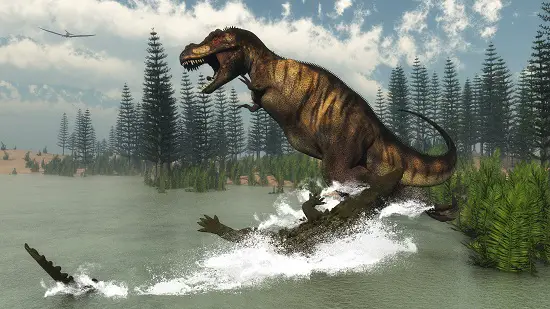
What about Deinosuchus?
Although perhaps the most famous prehistoric alligators due to its large size and weight was certainly alive and likely preyed on unsuspecting dinosaurs it was not a dinosaur itself. It was firmly an alligatoroid crocodilian, even its name means terrible crocodile, and it really was.
Deinosuchus lived across North America 82 to 73 million years ago and could grow up to 39 feet long and weigh 8000 kg, almost 20,000 lbs, which is simply huge and makes it understandable when living at the same time, achieving such size and even having a diet of dinosaurs why it is often mistaken for being a dinosaur.
Perhaps knowing what we know about it, and it not being a dinosaur is more scary. As its ancestors will watch us from rivers and lakes all over the world to this day.
If Alligators Arrived So Long Ago, How Did They Survive the Extinction?
A final and important question for many is that if alligators did indeed emerge some 100 million years ago, how did their ancestors of alligators and crocodiles survive the Cretaceous-Paleogene (K-Pg) extinction event? The event is commonly characterized as “the asteroid that hit the earth 65 million years ago” and is the event that signaled the end of the dinosaur era. But how did alligators make it through, then?
The main reason is that alligators and their Crocodilian siblings are incredibly resilient creatures. They can go for long periods of time without eating thanks to an incredibly efficient fat storage system in their bodies. This will undoubtedly have helped certain species to survive when food was scarce after the extinction event, and then thrive in competition in the eons that followed.
On top of that, alligators are semi-aquatic and can live in all kinds of environments where there is sufficient water and habitable land. This means that even if many of them were killed by external events, there was always a good chance of large populations of alligator ancestors surviving such things.
We have a few in a series of articles about other animals that may or may not be related to dinosaurs on the site, some are listed below. Feel free to take a look.
- Are Chickens dinosaurs?
- Are sharks related to dinosaurs
- Are Turtles related to dinosaurs
- Are lizards related to dinosaurs
- Are crocodiles related to dinosaurs
- Is a rhinoceros a Dinosaur?
Conclusion
Although scientifically we can say with certainty that the alligator is an amazing and impressive creature, but a dinosaur it is not. The closest relation to dinosaurs, and if needed the dinosaurs living amongst us today, are Birds.
That said Alligators and crocodiles, or at least their ancestors have not changed drastically in the last 250 or so million years and if we want to take a look into the past, when a dinosaur saw an alligator swimming past it would not have looked too different to the ones you see in rivers and lakes all over the world today.
So at least in appearance, we have something alive at the time of the dinosaurs, even if they are not actually dinosaurs.
References
- https://www.nature.com/articles/nature22037
- https://a-z-animals.com/blog/are-alligators-dinosaurs/#:~:text=Alligators%20are%20not%20dinosaurs%2C%20though,we%20see%20on%20Earth%20today.
- https://www.activewild.com/are-alligators-dinosaurs/
- https://en.wikipedia.org/wiki/Dinosaur_classification
Hi, I am Roy Ford a General Studies and English Teacher who has taught all over the world. What started as a fossil collection became a great way to teach, motivate and inspire students of all ages and all over the world about dinosaurs and from that and children’s love of dinosaurs came the site dinosaur facts for kids, a resource for all ages.

